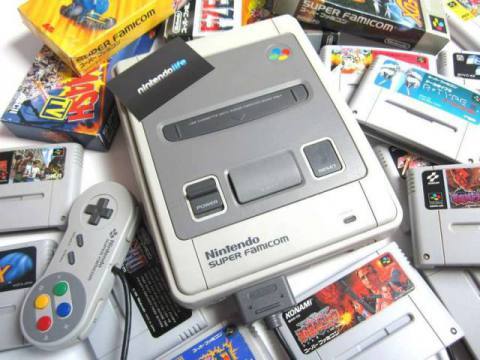Originally published way back in March 2013, we thought we’d re-share this feature on the Super Famicom to commemorate its 30th birthday today.

To many, it’s the greatest video game console ever made. The Super Famicom — or Super Nintendo Entertainment System as it is more commonly known outside of its native Japan — is host to some of the finest pieces of interactive entertainment ever made. It was on this console that Nintendo refined so many of the franchises which had made it famous on the original NES; series like Super Mario, Zelda and Metroid all came of age on the this 16-bit wonder. Third party support was almost unprecedented; big-hitters like Capcom, Konami, Square, Irem and Enix all flocked to support the console with their biggest and best releases. Although console technology has advanced to the point where photo-realistic visuals are now possible and players are able to prove their skills online with a global roster of rivals, it’s genuinely difficult to think of a modern system which has a library that is as fully-formed and packed with classics as the Super Famicom (or SNES, if you prefer).
When it launched on November 21, 1990, the Super Famicom was thrust into direct competition with Sega’s Mega Drive and NEC’s PC Engine. Despite coming to the market late, the console swept aside all challengers when it launched, effortlessly shifting 300,000 units in hours and causing such chaos that the Japanese government famously asked console manufacturers to schedule their hardware launches during weekends in the future (November 21 was a Wednesday). Another story from the time of release was the apparent involvement of the Yakuza; Nintendo is alleged to have shipped the consoles during the night to avoid them being intercepted and stolen by Japanese criminal gangs.
The system was designed by Masayuki Uemura, who also created the original Famicom. North American readers will instantly notice that the external casing of the Super Famicom is very different from that of the US SNES. The clean lines and two-tone grey casing were replaced for the American launch by a more boxy look, along with purple-coloured buttons. Oddly, Nintendo reverted back to the Super Famicom design when the system was made available in Europe. Being a UK-based site we’re clearly a little biased, but we much prefer the Super Famicom/Euro SNES design to the North American SNES shape.
One of the most memorable things about the Super Famicom was the controller — not only did it look aesthetically pleasing, but it offered more control options than had ever been witnessed before on a home console. Four face buttons — arranged in a diamond shape which has now become almost standard on all modern consoles — ensured that Nintendo fans had more buttons at their fingertips than their Mega Drive-owning chums (until the release of the six-button pad to coincide with the port of Street Fighter II: Special Champion Edition, Sega’s console only had three face buttons). But that wasn’t all; the Super Famicom pad also had L and R triggers on the top edge of the controller, which came in very handy when playing launch title F-Zero, as they allowed you to slightly bank your craft around corners. The pad remains one of the best ever seen in the business, with a rugged design and excellent D-pad. The only issue with the Super Famicom variant is that the cable is very short — possibly because Japanese rooms are traditionally a lot smaller than western ones, which means that there’s little need for a long length of cable between the console and the player.
It wasn’t just the console which looked different in North America – the cartridges were also re-shaped, again for a more boxy look. The Super Famicom carts (and European ones) are much sleeker, although the stickers don’t cover the top edge, like they do on North American games. The different shape was also intended as a crude form of region lockout, although converter cartridges quickly appeared which allowed players to circumvent this system. Despite being the same shape, Super Famicom carts were not compatible with European systems, as Nintendo also used a lockout chip which detected the region of the host system. Japanese and American consoles both used the same region chip because of the aforementioned physical incompatibility of the cartridges made it impractical to play them without special hardware.
Collecting for the Super Famicom today can be an immensely rewarding experience. The system’s popularity in Japan means that hardware and software are both readily available. There are many Japan-exclusive games — usually RPGs — which are worth collecting, although the prices of these must-have releases are usually high due to the lack of a western release.
When buying hardware, be wary of badly-yellowed systems — the Acrylonitrile butadiene styrene used to manufacture the Super Famicom’s casing has a habit of ageing quite badly, an apparent after-effect of the fire-retardant chemicals used in its production. This issue only impacts certain models manufactured up to a particular date, and can be reversed by using Retr0bright.
